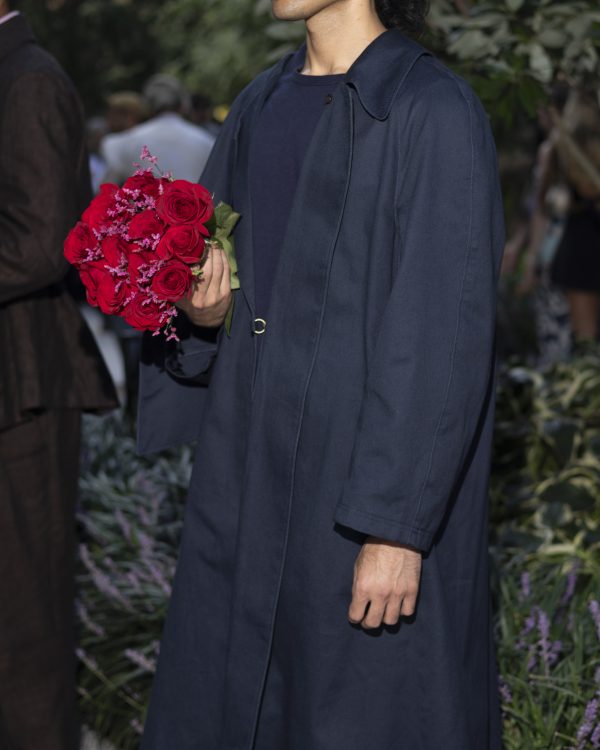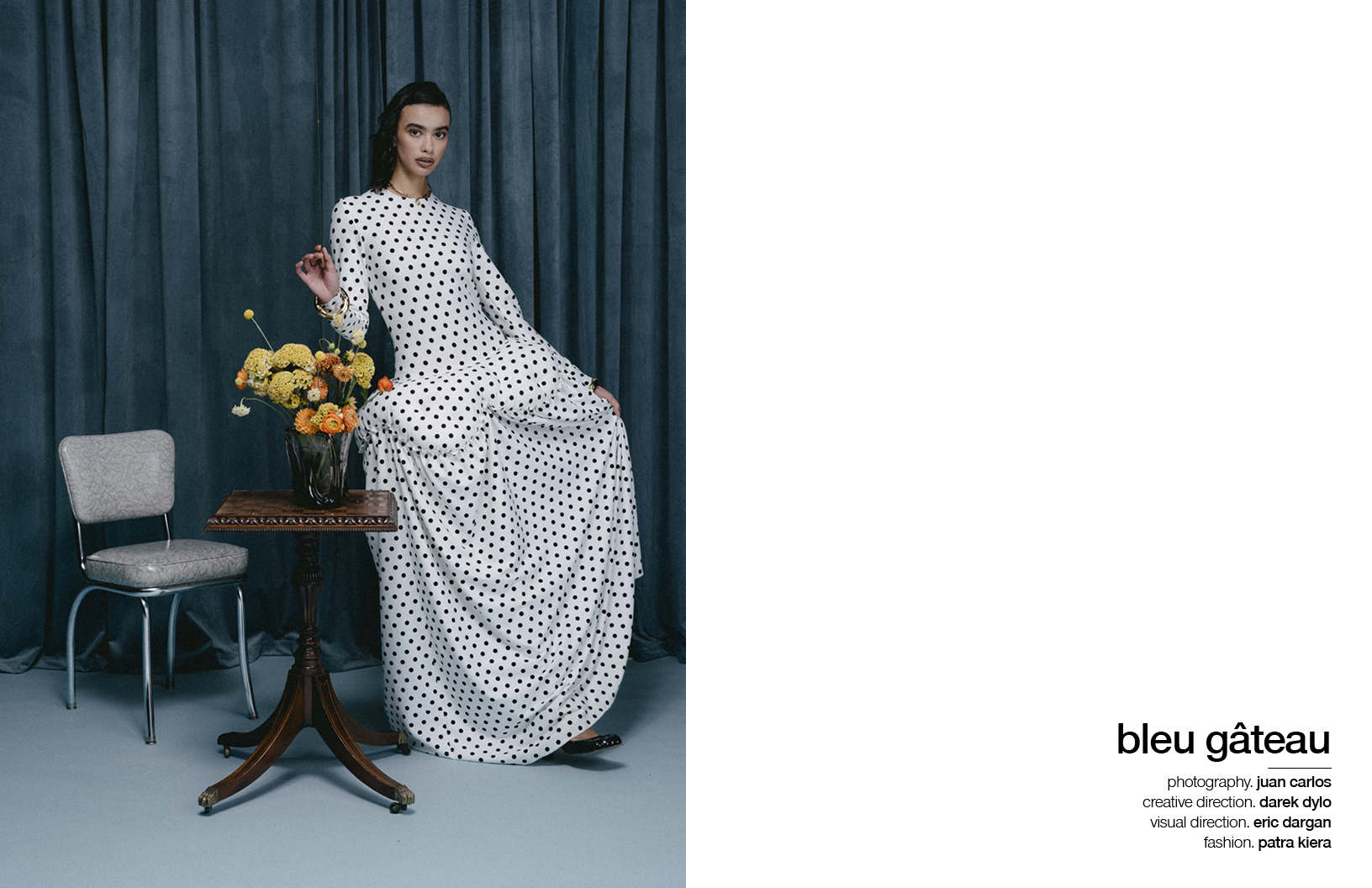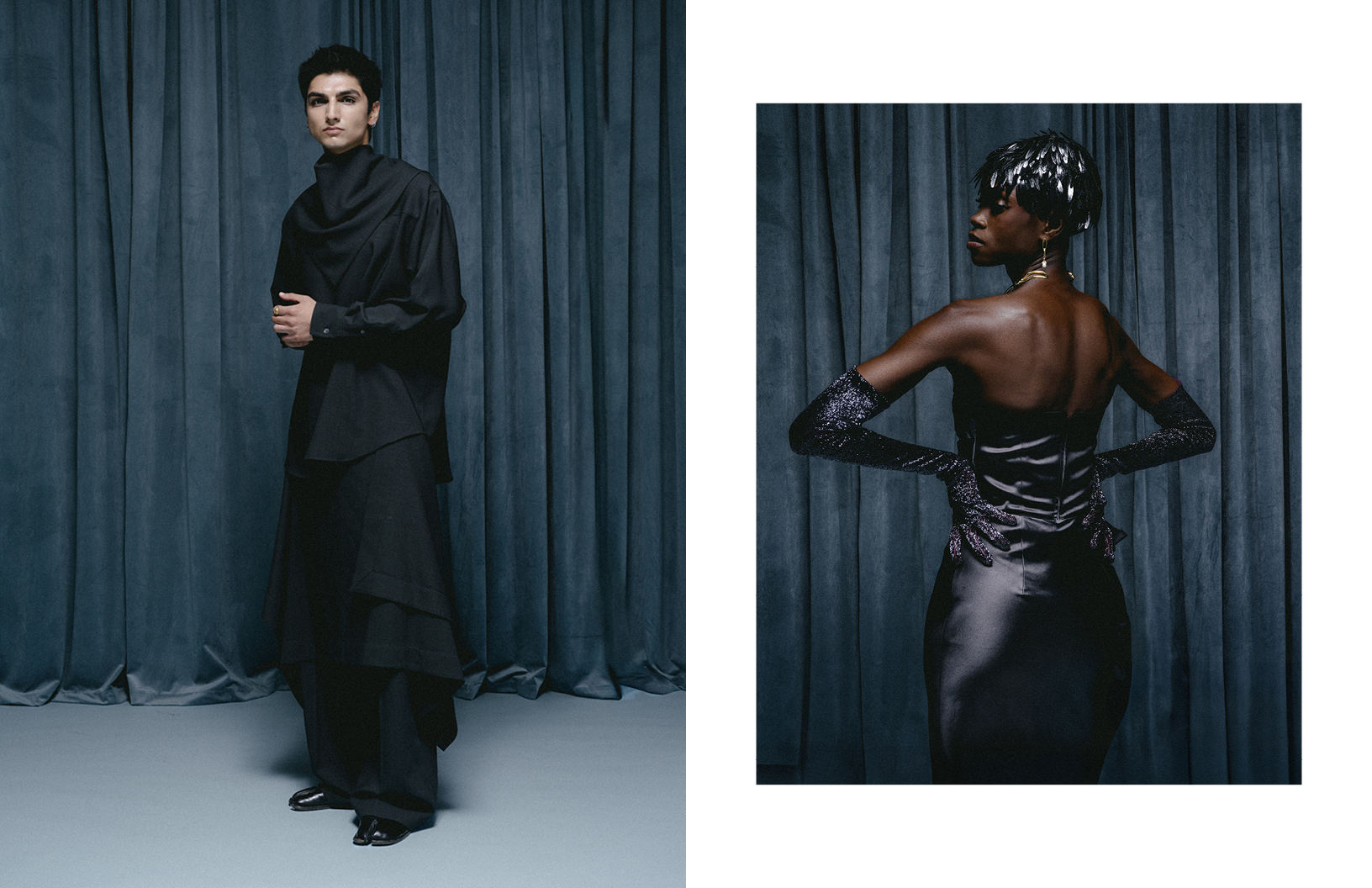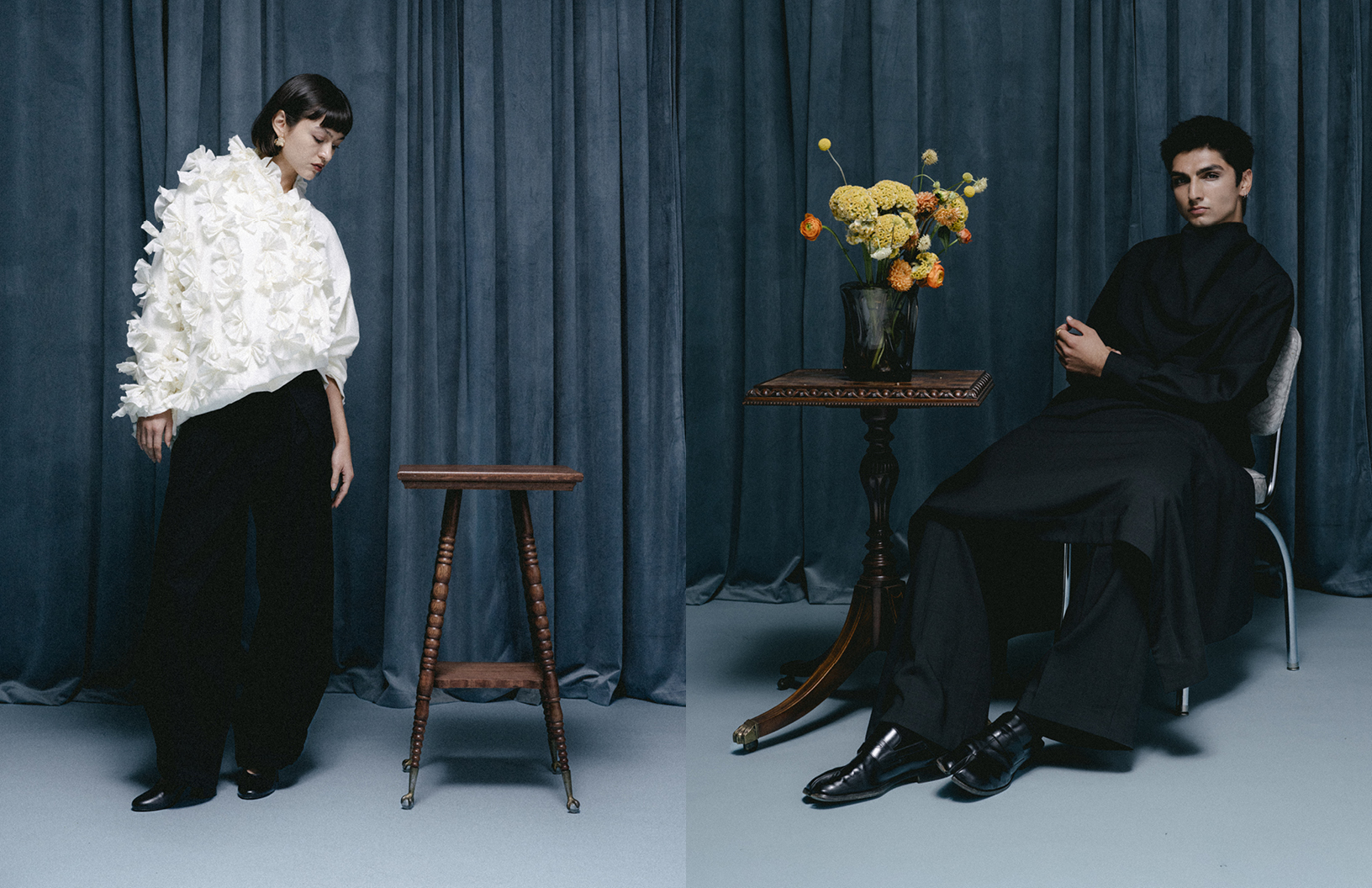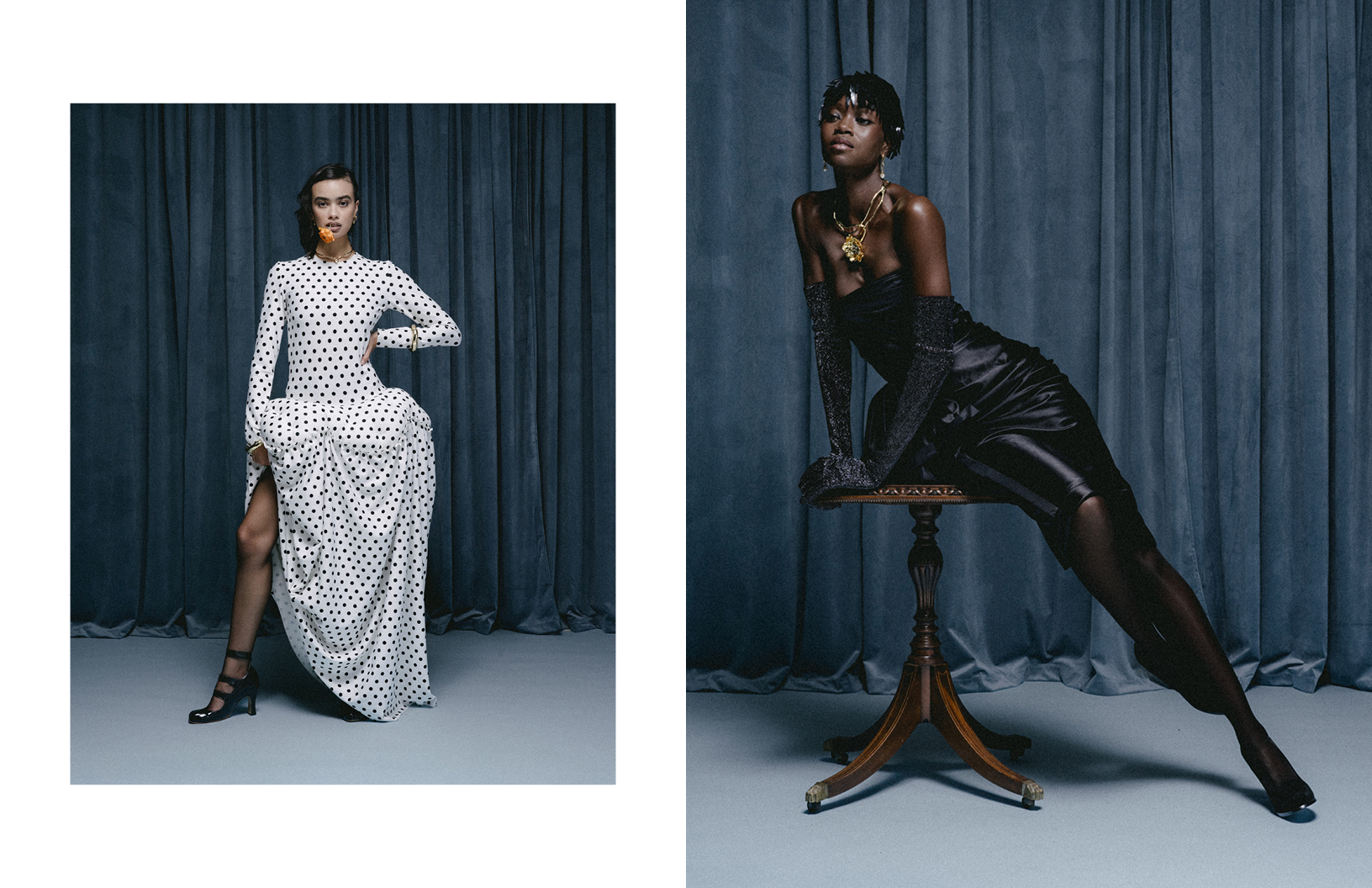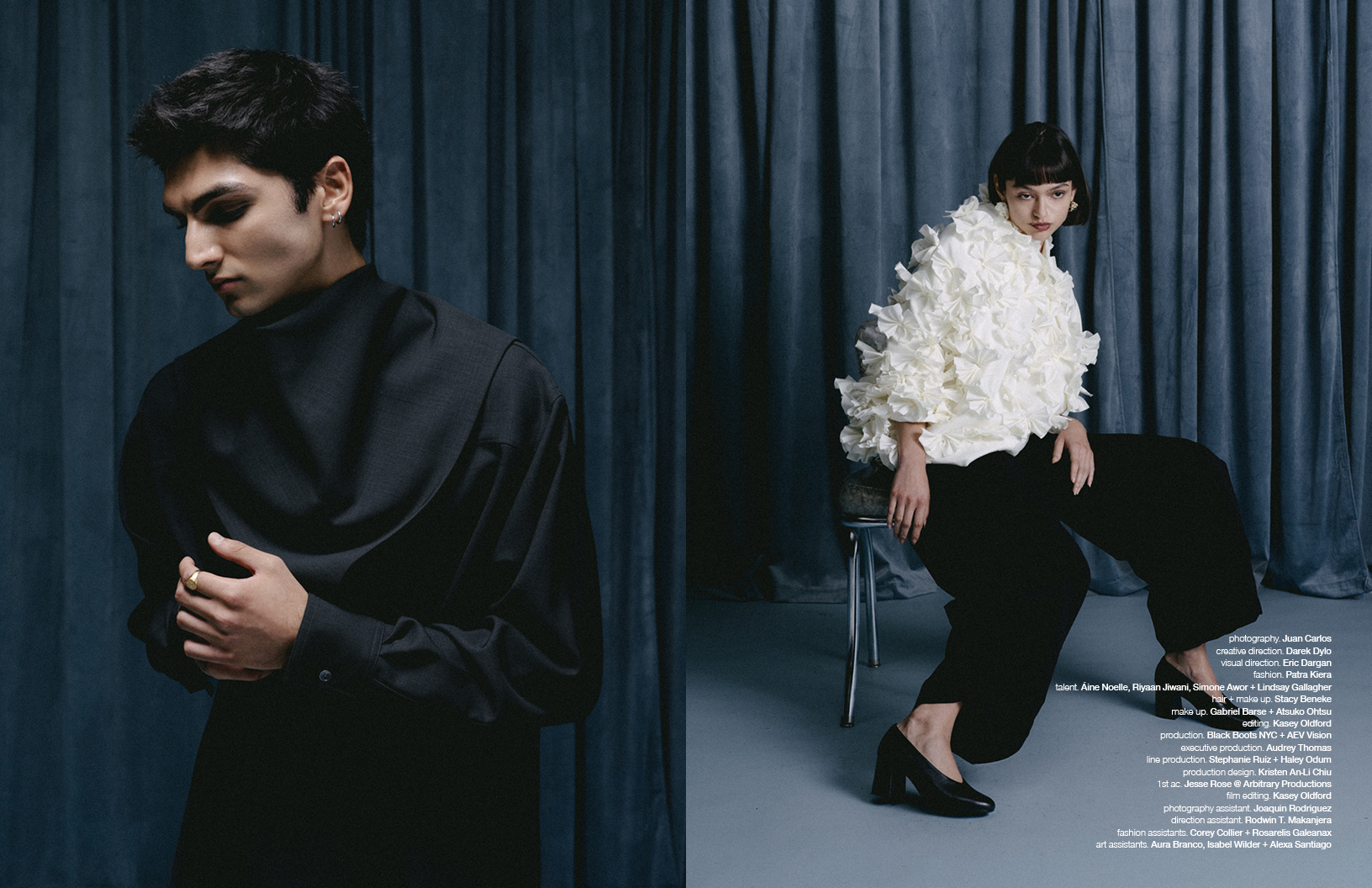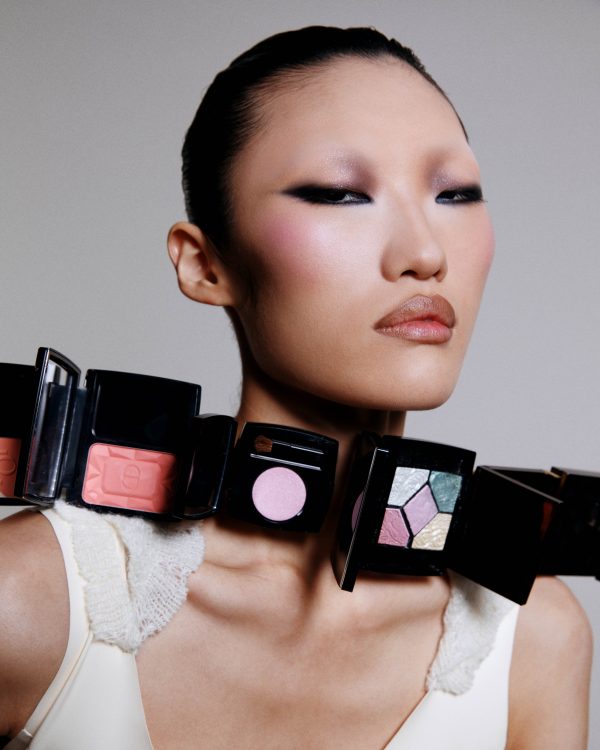Karen Quirion, founder of Canadian brand KQK, is a creative prodigy. With a Bachelor’s degree, a Master’s, and a visionary and luringly androgynous fashion label under her belt; the young designer has climbed mountains which others wouldn’t even think of ascending at her age. A finalist in the TFI New Labels Show, a Canadian runway event with $25,000 up for grabs, her young label has been hailed by the Western fashion scene. As Quirion steers her brand vision into new and compelling directions, we chat with her about the creative potential of asbestos mines, alternative femininity, and KQK’s punk roots.
Your young label has been presented at major fashion hubs including New York, Milan and Paris. Do you sometimes pinch yourself? What is it that’s brought you here?
It’s definitely felt surreal at times. I had a lot of luck over the years being surrounded [by] and also encountering people who believed in my work; it made a world of difference in reaching these goals. Looking back, considering the aesthetic of the brand, I believe the timing also happened to be right, as it renders well with the woman nowadays.
What’s your personal favourite from the A/W 2018 collection and why?
I’d have a hard time picking one piece specifically. Overall though, I feel particularly proud [of] the jackets. From one collection to another, they remain the pieces I really try to challenge myself with, in terms of research and detail. These ones particularly brought a set of difficulties but I’m quite happy with how they turned out.
Your A/W 2018 continues the tentative extension of your colour palette with the addition of burnt orange, which you’ve previously likened to the fire of life. The KQK woman is obviously changing but why?
Absolutely. Change is a necessity. I would say the KQK woman is evolving in parallel with the maturity I feel I am gaining as a person. I find myself looking for a deeper sense to my work, trying to convey a set of values which I believe in. The colours I’ve been using over the past seasons also represent an array of different emotions and beliefs; all telling a different story from one collection to another.
Apart from music, a lot of your inspiration comes from your travel and brutalist architecture. Is there a specific site or piece of architecture that inspired the A/W 2018 collection in particular?
I’ve been paying a lot of attention lately to my hometown, Thetford Mines. Although I never felt entirely aware before, the scenic beauty of it really struck me over the past year. To describe it briefly, the city was once one of the most productive mining areas for asbestos in the world. The mines are now closed but the city is still surrounded by huge asbestos mine tails with multiple piles of rocks. Those impressive sights definitely played an important role in defining the overall aesthetic of this collection.
The A/W 2018 collection, more than any previous one, is dynamic: your pieces realign themselves with movement and change with the light. Why did you opt for this aesthetic?
I wanted this collection to be more assertive, hopeful and vibrant than the previous ones. And yet, it was also important that the feel of it remained raw, mysterious and almost poetic in a way. The idea came down to combining nostalgic elements and details while simultaneously facing forward, with the evolution of both the brand and our consumers in mind.
You use a lot of aesthetically stunning fabric interplay, which has sort of become a signature feature of KQK. How important are aesthetics and functionality to you and which of them do you think will have a brighter future?
While I tend to focus a lot on aesthetic, trying to come up with new shapes and fabric techniques, I think both aesthetics and functionality really have to come together. The look of a piece might be the first thing appealing to a consumer but over time, it is the functionality of it that keeps clients coming back. It then comes down to balancing them as much as possible, as I believe they are interdependent.
Your production is done in a factory owned by your mother in Thetford Mines. What are your thoughts about local production? Is sustainability something you’d want to capitalize more on in the future?
We have indeed been doing the production for the first few years at my mother’s factory, but have since then relocated our activities to a smaller atelier, also in Thetford Mines. Local production significantly allows us control over the quality of the garments. It also articulates well with our values as we are cultivating exclusivity and uniqueness. Regarding sustainability, we haven’t put a lot of focus yet into deciding if we will be capitalizing on this in the future, but I believe it would make a lot of sense if we did, given that it is already something we are highly focusing on with the way we operate within our production.
You’ve been present at the Verge Queer Fashion Show in New York. Do you consciously dub yourself as a queer fashion designer or is that a label that just happens to fit your androgynous aesthetic?
It is in fact a label that happened to fit with the aesthetic of KQK. While the focus behind the brand is not particularly aimed towards a specific community, I also believe it can speak and relate to a large diversity of women with a common desire to dress in an alternative femininity to make them feel strong and empowered.
Your label does have a distinctively feminine edge. Plus, in a previous interview, you’ve said you’d be interested in launching a menswear line. Are you working on this project already and how do you envision the KQK man to look like?
Lately, I’ve been trying to refocus my energy on strengthening the identity of the KQK woman before anything else. Extending the brand with a menswear line is definitely still in the cards, but I mostly want to make sure the timing is right before taking on this project. For the KQK man, similarly to the woman, I am envisioning a lot of tailored looks, mixed with refined streetwear-inspired pieces; [a] very confident look overall.
Is a collaborative collection something you’d be open to in the future? And if so, whom would you like to work alongside?
Yes, absolutely. I’d love to get to collaborate with other creatives from different backgrounds; not necessarily only within the fashion industry, but also musicians, and architects even.
Can you tell us a little about the collection you’re working on at the moment? What can we expect in the near future?
At the moment, I’m doing the final touches on the S/S19 collection. The main inspiration on this one was nature itself; which lead me into including new types of fabric, as a well as a whole new colour palette this time again.
Last but not least: to lead a label that’s born in the spirit of youth rebellion, will that be a challenge for you, as you mature both as a person and a designer? Or are you eternally punk?
I take it as a challenge, in fact, to keep evolving the brand. I’m growing as a person and so is my clientele. I intentionally want to lead fresh perspectives and direct the brand toward something more mature and researched, while at the same time carrying this youthful spirit. The punk subculture also influenced my work a lot, especially in the beginning. I’ll probably always go back to it and try to translate these references into more sophisticated tones.
all designs. KQK
shop the latest KQK collection here
follow KQK on Instagram
photography. Sandrine Castellan
model. Kate McNamara @ Plutino Models
hair + make up. Laurie Deraps






















